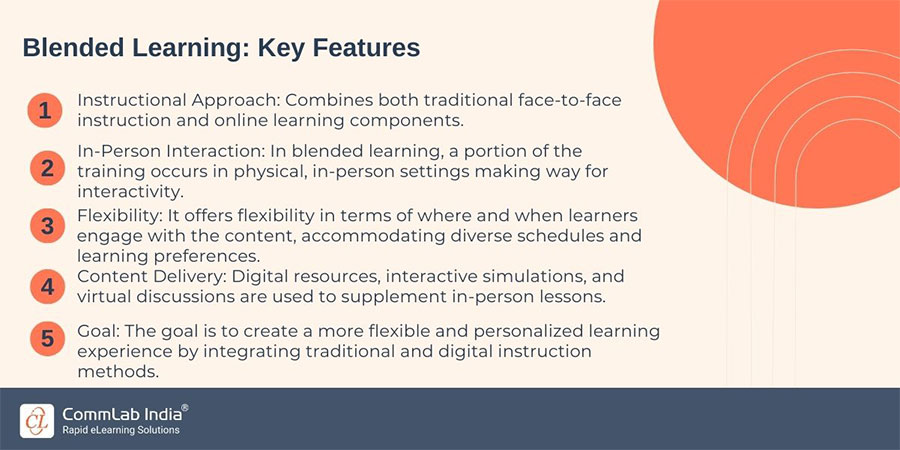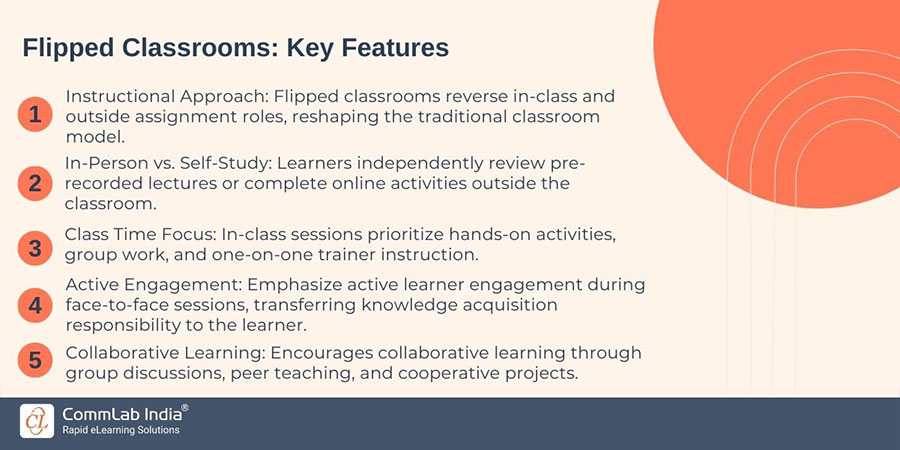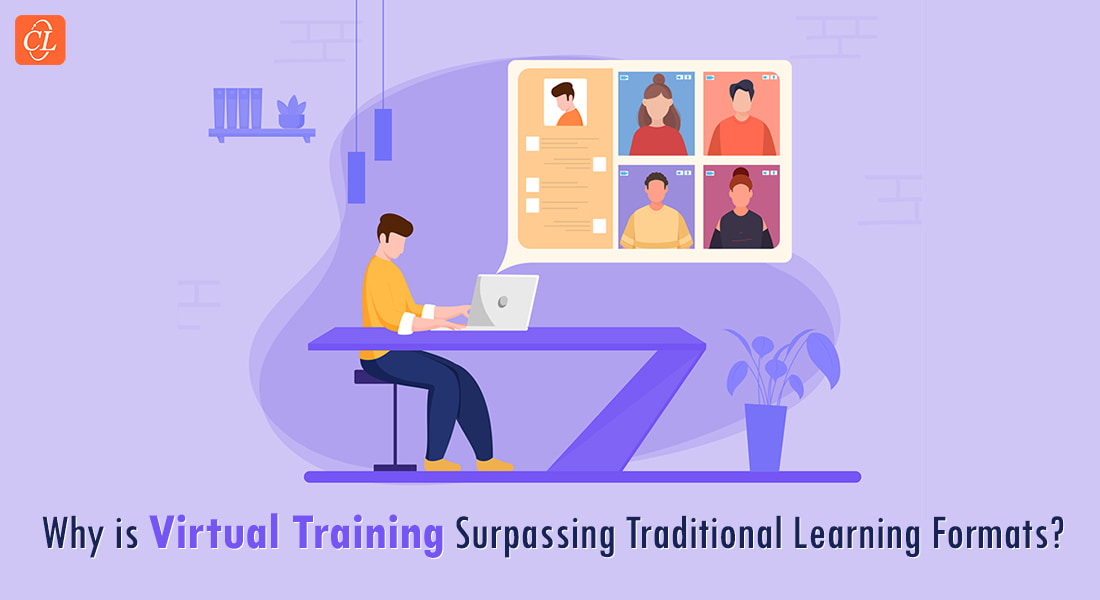Why Blended Learning Trumps Flipped Classrooms?

Have you ever found yourself torn between the need for structure and the desire for flexibility in your employee training methods? If so, you're not alone! Learning and Development (L&D) managers often struggle to strike a balance between these two crucial elements. That's where blended learning enters!
What is Blended Learning?
Blended learning is a training delivery approach that brings together the best of both online and in-person instruction, offering a structured and flexible learning experience.
While there’s no questioning the impact of blended learning, there’s often a debate: blended learning versus flipped classroom training – what's better. And blended learning emerges as the clear winner, striking the perfect balance to meet diverse needs and revolutionize corporate training. Let's explore why...
Introduction to Blended Learning and Flipped Classrooms
In corporate training, blended learning combines in-person sessions with online modules, utilizing digital resources, interactive simulations, and virtual discussions to enhance the learning experience. The objective is to offer a flexible and personalized training approach that integrates both traditional and digital methods.
On the other hand, flipped corporate classrooms reorganize the traditional training model by reversing the roles of in-person sessions and self-study. Here, employees access pre-recorded training materials or complete online activities prior to in-person sessions. During the face-to-face sessions, the focus shifts to hands-on activities, collaborative projects, and personalized guidance. This encourages active engagement during in-person training and empowers employees to take charge of their learning.
Differences between Blended Learning and Flipped Classrooms
Let us now understand the key factors differentiating blended learning from flipped classroom training:
Blended Learning

Flipped Classrooms

While these were the key features of each approach, let us discuss the challenges associated with flipped classrooms so we can understand how blended learning addresses them.
→ Shop Now: Blended Learning: A Guide to Boost Employee Performance [eBook]
Challenges of Flipped Classrooms (and How Blended Learning Addresses Them)
Challenge: Self-Paced Learning
One of the primary challenges in flipped training is self-paced learning. Employees advancing through online materials at their own speeds can result in varying comprehension and progress. This highlights the need for a structured approach that ensures all employees advance at a reasonable pace and receive necessary support when they need it.
Blended learning offers a tailored solution by combining self-paced online components with in-person instruction, providing a balanced and structured learning experience that can be finely tuned to meet corporate training objectives.
Challenge: Technology Barriers
Another challenge in a flipped training environment is technology barriers. Some employees may lack access to essential devices or dependable internet connectivity, creating disparities in their ability to engage with online training materials. These technology hurdles can hinder equitable access to corporate training.
Blended learning addresses this challenge by accommodating diverse levels of technology access. It allows employees to access digital learning resources both in the workplace and remotely, ensuring equitable access to training materials and fostering consistent skill development across the organization.
Challenge: Lack of Engagement
Maintaining employee engagement in self-study training environments can be challenging in a flipped training model. When left to learn independently, employees may disengage or lack motivation, which presents a critical obstacle to effective skill development.
Blended learning offers an effective solution by incorporating interactive online content and in-person engagement. This combination keeps employees motivated and actively participating in their training, effectively addressing the challenge of engagement in corporate training.
Challenge: Assessment and Feedback
In a flipped training environment, monitoring and providing timely feedback can be challenging due to the self-paced nature of learning. Continuous assessment and personalized feedback are essential for employee skill development, but ensuring these in a flipped model can be cumbersome.
Blended learning addresses this challenge through a variety of assessment tools. It incorporates different assessment methods, both online and in-person, to monitor employee progress. Immediate feedback and tailored assessments are integral components of blended learning, effectively resolving the challenge of assessment and feedback in corporate training.
Challenge: Diverse Learning Styles
Flipped training may not cater to all employee learning styles, potentially leaving some employees behind. Different employees have varying preferences and learning styles, and a one-size-fits-all approach may not effectively engage every employee.
Blended learning offers a solution by customizing the training experience to accommodate diverse learning styles. It provides options for different types of content delivery and allows trainers to tailor instruction to individual needs, ensuring that the challenge of diverse learning styles is effectively addressed in the corporate training context.
Wrapping Up
After exploring the key differences between blended learning and flipped classrooms, it is clear that both approaches have their own strengths and limitations. However, when it comes to finding the perfect balance between flexibility and structure in corporate training, blended learning emerges as the clear winner.
One of the main advantages of blended learning is its flexibility. By combining online and face-to-face instruction, learners have more control over their learning experience. They can access course materials at any time, allowing them to learn at their own pace and review difficult concepts as needed. This level of flexibility also benefits instructors as they can cater to different learning styles and individual needs within a single class.
On the other hand, flipped classrooms often require learners to watch training videos or complete certain modules outside of traditional training time. While this may provide some flexibility for the employees who work better during non-traditional hours, it can also create additional stress for those with busy schedules or limited access to technology.
Considering all these factors, it is evident that blended learning trumps flipped classroom model and proves to be a great approach to deliver employee training. Here's an eBook to help you know more about blended learning...





